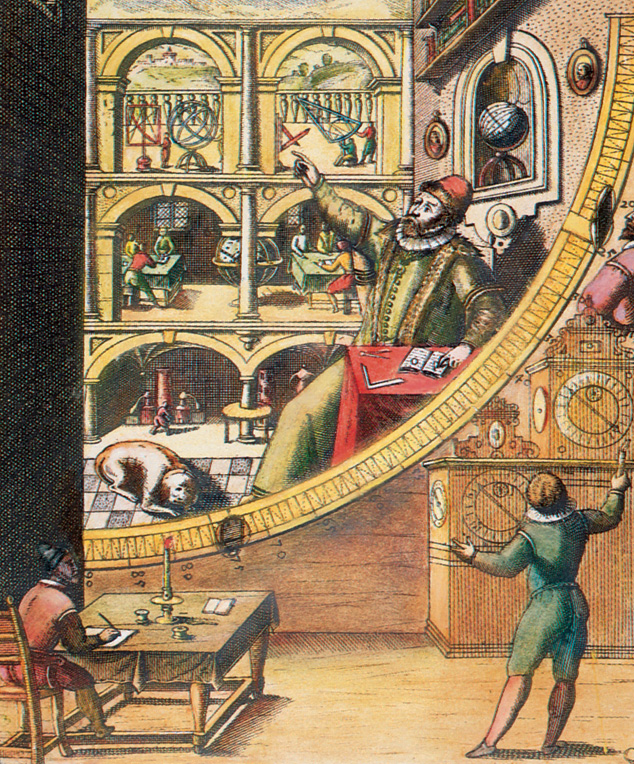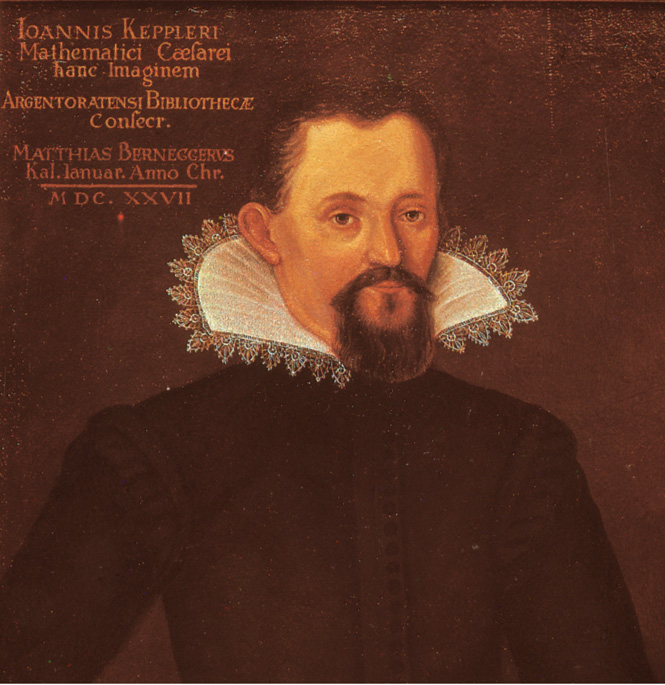4-3 Tycho Brahe’s astronomical observations disproved ancient ideas about the heavens
A supernova explosion and a comet revealed to Tycho that our universe is more dynamic than had been imagined
On November 11, 1572, a bright star suddenly appeared in the constellation Cassiopeia. At first, it was even brighter than Venus, but then it began to grow dim. After 18 months, it faded from view. Modern astronomers recognize this event as a supernova explosion, the violent death of a massive star.
In the sixteenth century, however, the vast majority of scholars held with the ancient teachings of Aristotle and Plato, who had argued that the heavens are permanent and unalterable. Consequently, the “new star” of 1572 could not really be a star at all, because the heavens do not change; it must instead be some sort of bright object quite near Earth, perhaps not much farther away than the clouds overhead.
The 25-year-old Danish astronomer Tycho Brahe (1546–1601) realized that straightforward observations might reveal the distance to the new star. It is common experience that when you walk from one place to another, nearby objects appear to change position against the background of more distant objects. This phenomenon, whereby the apparent position of an object changes because of the motion of the observer, is called parallax. If the new star was nearby, then its position should shift against the background stars over the course of a single night because Earth’s rotation changes our viewpoint. Figure 4-7 shows this predicted shift. (Actually, Tycho believed that the heavens rotate about Earth, as in the Ptolemaic model, but the net effect is the same.)


Tycho’s careful observations failed to disclose any parallax. The farther away an object is, the less it appears to shift against the background as we change our viewpoint, and the smaller the parallax. Hence, the new star had to be quite far away, farther from Earth than anyone had imagined. This was the first evidence that the “unchanging” stars were in fact changeable.
Tycho also attempted to measure the parallax of a bright comet that appeared in 1577 and, again, found it too small to measure. Thus, the comet also had to be far beyond Earth. Furthermore, because the comet’s position relative to the stars changed from night to night, its motion was more like a planet than a star. But most scholars of Tycho’s time taught that the motions of the planets had existed in unchanging form since the beginning of the universe. If new objects such as comets could appear and disappear within the realm of the planets, the conventional notions of planetary motions needed to be revised.
Tycho’s observations showed that the heavens are by no means pristine and unchanging. This discovery flew in the face of nearly 2000 years of astronomical thought. In support of these revolutionary observations, the king of Denmark financed the construction of two magnificent observatories for Tycho’s use on the island of Hven, just off the Danish coast. The two observatories—Uraniborg (“heavenly castle”) and Stjerneborg (“star castle”)—allowed Tycho to design and have built a set of naked-eye astronomical instruments vastly superior in quality to any earlier instruments (Figure 4-8).
Tycho and the Positions of the Planets
With this state-of-the-art equipment, Tycho proceeded to measure the positions of stars and planets with unprecedented accuracy. In addition, he and his assistants were careful to make several observations of the same star or planet with different instruments, in order to identify any errors that might be caused by the instruments themselves. This painstaking approach to mapping the heavens revolutionized the practice of astronomy and is used by astronomers today.

A key goal of Tycho’s observations during this period was to test the ideas Copernicus had proposed decades earlier about Earth going around the Sun. Tycho argued that if Earth was in motion, then nearby stars should appear to shift their positions with respect to background stars as we orbit the Sun. Tycho failed to detect any such parallax, and he concluded that Earth was at rest and the Copernican system was wrong.
On this point Tycho was in error, for nearby stars do in fact shift their positions as he had suggested. But even the nearest stars are so far away that the shifts in their positions are less than an arcsecond, too small to be seen with the naked eye. Tycho would have needed a telescope to detect the parallax that he was looking for, but the telescope was not invented until 1608, years after his death in 1601. Indeed, the first accurate determination of stellar parallax was not made until 1838.
Although he remained convinced that a stationary Earth was at the center of the universe, Tycho nonetheless made a tremendous contribution toward putting the heliocentric model on a solid foundation. From 1576 to 1597, he used his instruments to make comprehensive measurements of the positions of the planets with an accuracy of 1 arcminute. These measurements are as well as can be done with the naked eye and were far superior to any earlier measurements. Within the reams of data that Tycho compiled lay the truth about the motions of the planets. The person who would extract this truth was a German mathematician who became Tycho’s assistant in 1600, a year before the great astronomer’s death. His name was Johannes Kepler (Figure 4-9).